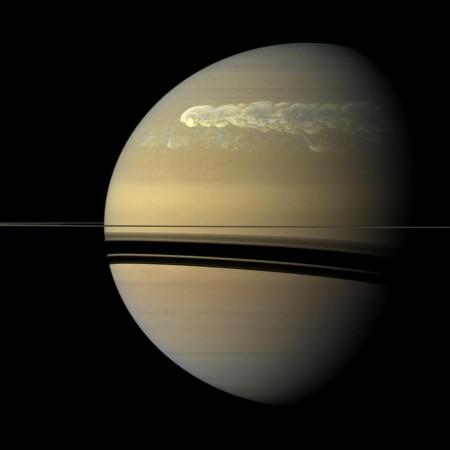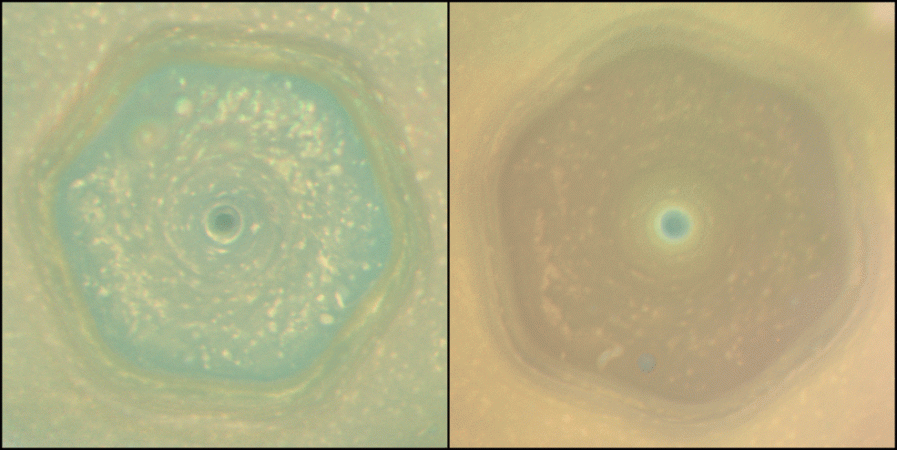
NASA's Cassini spacecraft, set to end its mission in September 2017, has captured Saturn's solstice – the longest day of summer in the ringed planet's northern hemisphere and the shortest day in its southern hemisphere-- of late.
Also Read: Humans may be able to reproduce healthy babies in space!
The Saturnian solstice takes place in every 15 Earth years, while it completes its orbit around the Sun as the northern and southern poles switch seasons.

Analysing the climate change in Saturn's atmosphere is one of the main goals of Cassini's Solstice Mission, which is the second extended mission of the spacecraft, a NASA statement said.
The spacecraft had touched down on Saturn in 2004 for its primary mission-- to explore the ringed planet and its moons.
The spacecraft had carried out its first extended Equinox Mission in 2008 to 2010 during which, the spacecraft saw the sunlight striking Saturn's rings edge-on and captured the dramatic new ring structures. The Cassini spacecraft was tasked with the Solstice Mission in 2010.
"During Cassini's Solstice Mission, we have witnessed -- up close for the first time -- an entire season at Saturn," said Linda Spilker, Cassini project scientist at NASA's Jet Propulsion Laboratory, Pasadena, California, said.
"The Saturn system undergoes dramatic transitions from winter to summer, and thanks to Cassini, we had a ringside seat," Spilker added.
The spacecraft also saw the disappearance of bluer hues that had lingered in the far north as springtime hazes began to form. The hazes are part of the reason why features in Saturn's atmosphere are more muted in their appearance than those on Jupiter.

Data from the mission showed how the formation of Saturn's hazes is related to the seasonally changing temperatures and chemical composition of Saturn's upper atmosphere. Cassini researchers have found that some of the trace hydrocarbon compounds there -- gases like ethane, propane and acetylene -- react more quickly than others to the changing amount of sunlight over the course of Saturn's year.
It was surprising that the changes analysed by Cassini didn't occur gradually. The changes had occurred suddenly at specific latitudes in the banded atmosphere.
"Eventually a whole hemisphere undergoes change, but it gets there by these jumps at specific latitude bands at different times in the season," said Robert West, a Cassini imaging team member at JPL.
















